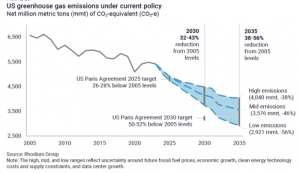Here’s what the hottest summer on Earth looked like
EcoTech Note: This is a reminder that while our advocacy work must sustain over the long run, it DOES constitute an emergency. Contrary to claims from climate skeptics that advocates are alarmist, it appears predictive models underestimated how fast-bad climate change, would get.
Global temperatures between June and August were 1.5 degrees Celsius (2.7 degrees Fahrenheit) above the preindustrial average, the Copernicus Climate Change Service said Friday — just edging out the previous record set last summer. The sweltering season reached its apex in late July, when Copernicus’s sophisticated temperature analysis program detected the four hottest days ever recorded.
Meanwhile, temperatures for the year to date have far exceeded anything seen in the agency’s more than 80 years of recordkeeping, making it all but certain that 2024 will be the hottest year known to science.












